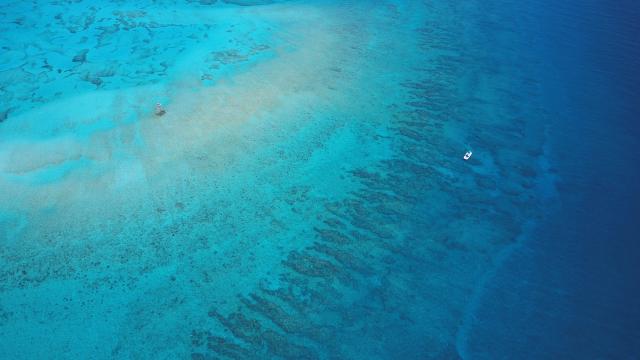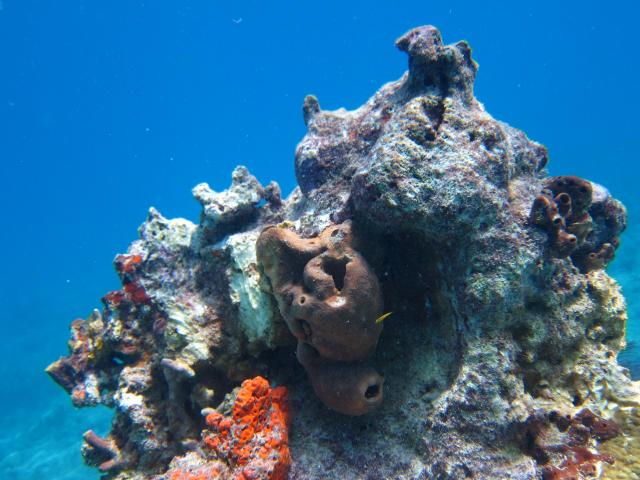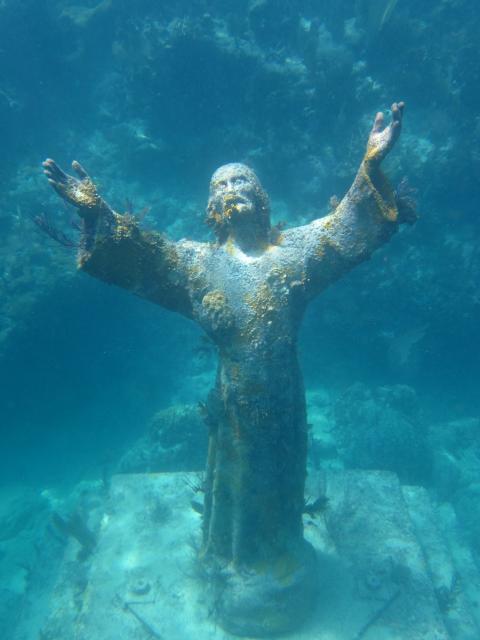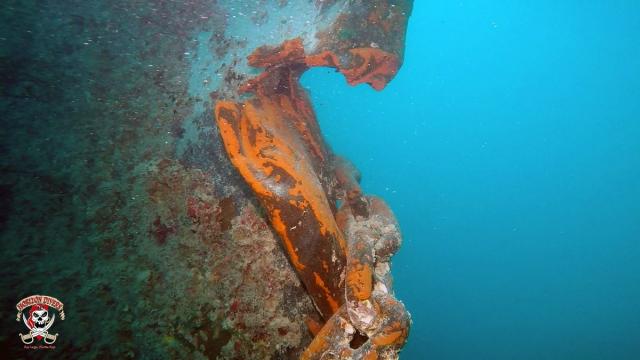A Key Largo Reef and Wreck Diving Report
As the Florida Keys recover from the impacts of Hurricane Irma’s Sept. 10 passage through the island chain, professional dive operators are assessing post-Irma conditions of coral reefs and shipwrecks, precious resources located in the protected waters of the Florida Keys National Marine Sanctuary.
Off Key Largo, divers report that some of the favorite iconic dive and snorkel sites located 3 to 4 miles offshore remain very much intact, despite some topographic changes and a displacement of sand from deeper waters onto shallow areas of the reefs, which tidal cycles and ocean currents are expected to correct soon. Here are some highlights.
Molasses Reef: Marked by over two dozen mooring buoys and home to schools of grunt and gray snapper, Molasses Reef is named for what is thought to be the cargo of the wrecked wooden-hulled Austrian ship Slobodna that ran aground in 1887.
It juts out into the cleansing waters of the Gulf Stream, and has high-profile coral heads and some of the best visibility anywhere in the Florida Keys. Irma’s strong storm surge displaced the sand surrounding the coral reefs, actually making some spots a foot or two deeper. Although reportedly some brain coral formations are now gone, the algae, soft corals and sea fans that the surge stripped from the substrate are already starting to grow back.
The recognizable 10-foot-long windlass or “winch” left behind near the wreckage of the Slobodna remains in place at a shallow site along Molasses Reef, nicknamed Winch Hole.
“Christ of the Abyss”: One of the most photographed underwater sites in the world, the 9-foot-tall “Christ of the Abyss” bronze statue — also known as “Christ of the Deep” and a recognized symbol of Key Largo’s John Pennekamp Coral Reef State Park — still stands unscathed on its concrete base in approximately 25 feet of water.
Located in waters adjacent to the nation’s first undersea park at a site called Key Largo Dry Rocks, the 4,000-pound statue still looks out over a thriving coral reef, dominated by a gigantic brain coral.
Duane: In 1987 a group of motivated dive operators spearheaded a project whereby two 327-foot retired U.S. Coast Guard cutters, Bibb and Duane, were sunk as dive attractions just south of Molasses Reef.
The Duane now rests upright in 120 feet of water while the Bibb landed on its starboard side in 130 feet of water. Both ships are colorfully encrusted and attract abundant marine life, although the Duane is the more visited of the two due to its upright orientation and shallower depth.
Post-Irma, divers report that the top of a smokestack fell off and rests on the sea floor beside the Duane, revealing a never-before-exposed area inside of the ship for divers to explore. Otherwise, the iconic crow’s nest atop the superstructure remains unmoved.
The Benwood: Hurricane Irma shifted the sands surrounding the wreck of the merchant marine freighter Benwood, which sank on the night of April 9, 1942, after colliding with the ship Robert S. Tuttle. Both were in blackout mode to avert German U-boats rumored to be active off the Keys coast.
Strong currents from Irma unearthed a previously undiscovered anchor near the wreck, adding an interesting new feature to this already popular dive site in just 35 feet of water. The site is characterized by its healthy fish populations, Christmas tree worms and encrusting fire coral that cloaks the hull.
Key Largo dive operators — many of them Blue Star operators who promote marine conservation on behalf of the sanctuary — excitedly noted that the experience on some wreck dives is like seeing them for the first time, with new features exposed. During the assessment divers also collected a variety of marine debris from the reefs and mangrove trees lining canals that lead to open-water access.
“Every day more fish return, sea turtles, gentle nurse sharks and stingrays, all cruising the spur-and-groove formations that make these coral structures so recognizable,” said Jack Fishman, a dive instructor at Key Largo’s Rainbow Reef Dive Center.
Florida Keys visitor information: fla-keys.com or 800-FLA-KEYS
Keys diving and snorkeling information: fla-keys.com/diving
Social: Facebook • Twitter • Instagram • Youtube • Keys Voices blog
Despite sea fans being broken off during hurricane Irma, soft corals are already growing back on the coral reefs. Image: Jack Fishman
The iconic Christ of the Abyss statue located at Key Largo Dry Rocks, was unscathed by hurricane Irma's forceful storm surge. Image: Jack Fishman
Staff at Horizon Divers report the Spiegel Grove's forward bow anchor chain’s position moved to the starboard side, ripping a notch in a section of the bow. Image: Jeff Knapp
During a post-Irma survey dive at the Benwood wreck, divers discovered a recently unearthed anchor, for decades buried in the sand. Image: Jack Fishman





